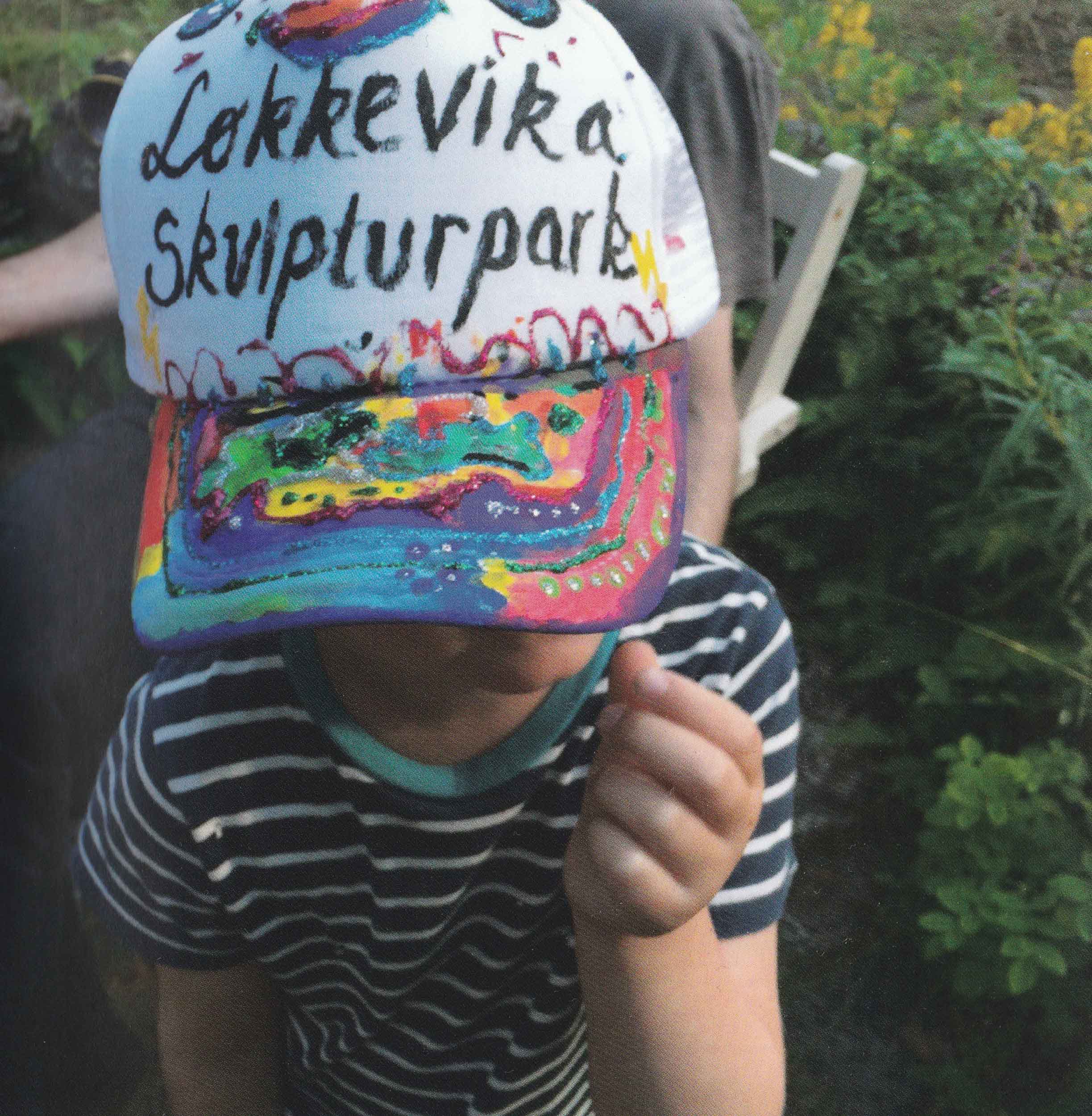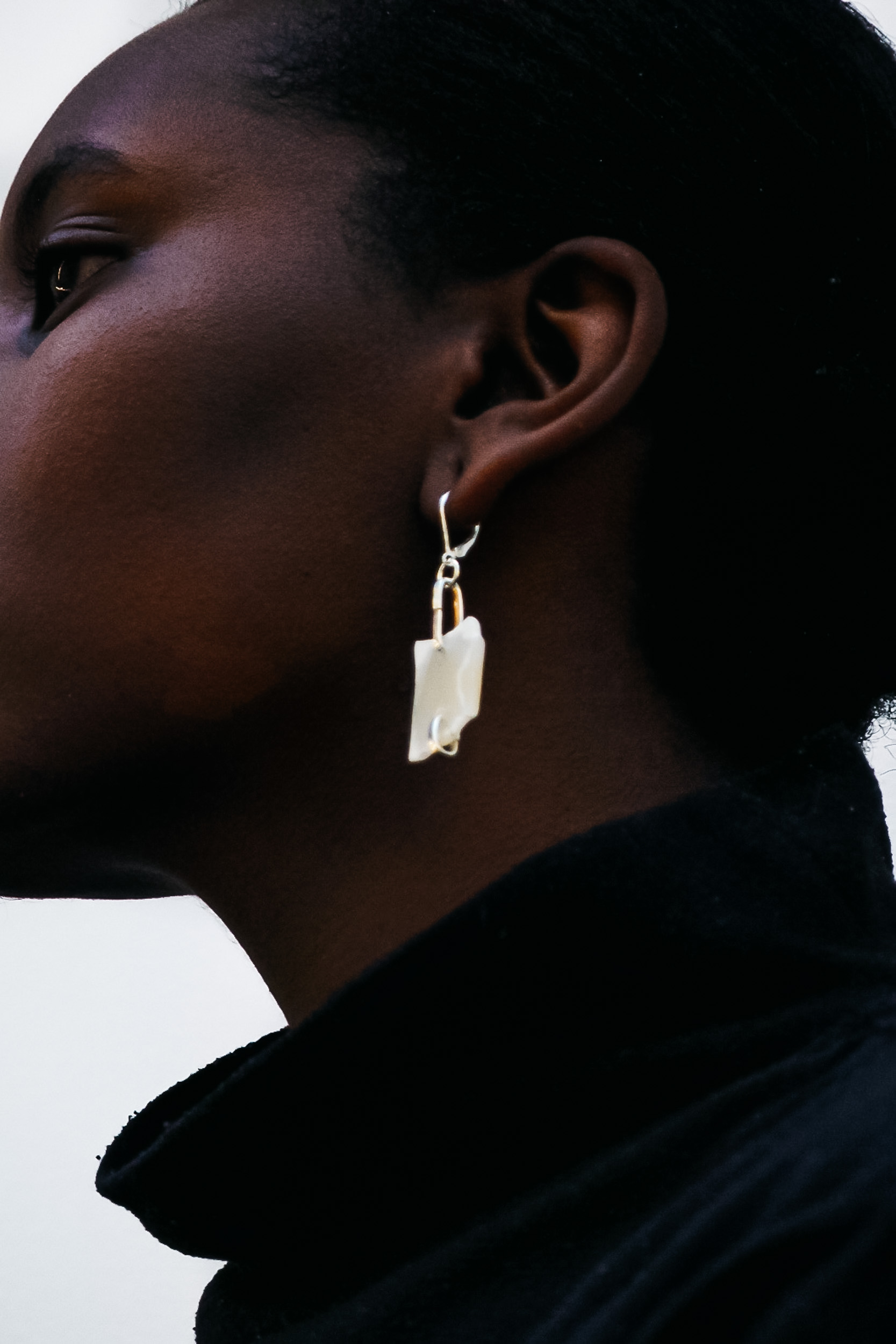“We are not saving the world” - Synne Skjulstad
"It all started with our very own private ‘sculpture park’ and having fun. On private ground of course, by the sea. Then, the park expanded onto the landscape surrounding our summer cottage , where we spend our summers."
The whole extended family was there with Synne Skjulstad, and they had just finished that day’s long walk. Hanging around on the beach, they took to ’rescuing’ plastic and other unidentifiable foreign objects from the sea and the sand, pebbles, mud and grass, if only for a few hours. -With time to kill, we all started gathering interesting forms and shapes, anything we could find which was possibly dead or not organic...and put them together into a whole family of freaks dotted randomly around the local landscape. Her partner Vemund took charge, and built a furious ’Skrotempæl’(totempole made from debris). Soon he was up in the trees and out on the sea in his kayak, collecting more materials for their improvised site-specific artworks, created by a bunch of Rusken members. He even paddled out to several islands nearby to gather rubble from what used to be their secret little beach havens, coves that now were strewn with bits and scraps of plastic tossed off by the sea itself. In the course of the summer, the themes of the sculptures changed, and some, hopefully, will persevere through the icy winter months and on into the next summer. In the course of those summer weeks, as the Park had taken on a certain look of completion, the professor in Synne woke up - what can we do with this? She sensed the onset of opinions, and commented on the process they had set in motion. She even went ahead and started researching the Problem with a capital P. The vastness of this global challenge, the extent of it and the potential consequences to all this Plastic. We’ve all seen it right, the images in various media, of the fish and the whales, the islands of plastic floating around. And she kept pondering, how to direct ourselves towards this issue without the usual fear-mongering?
-How can we find a different angle, another point of entry, as well as the established one? A more positive route?
And so, Synne and Vemund began making jewellery. They source their silver and gold threads, hooks and locks with a local goldsmith just up the road in Fagerborg. On those frail allergy free metals, they hang carefully perforated plastic bits in pairs. All the plastic has been found, then grouped, divided and paired. They never cut, modify or glue any of the objects, but only allow themselves to clean them of course, then make holes in order to hang them. Synne talks warmly of how her view of the little bits have changed during this process.
–You see, they are rather unique all of them, all the little pieces that we have rescued and given shelter to..some have been through a melting process, some have been bleached by the sun and broken by rocks, some we can not seem to recognise and others are as obvious as plastic screw corks from summers gone past..pepsi & cola-found on the same day. The soda war, the cola war, all these bottles adrift at sea. Some days I keep thinking that what we are doing, is part of an archaeology project of our time, if you get my drift?
There seems to be an overwhelming amount of rubbish out at sea, how can Synne possibly think that they can make a difference?
-Haha, I obviously don’t think that the way we view plastic debris as little gems here in our pink sitting room, is going to save the world. However, we may be able to contribute towards ‘how’ people look at the little pieces soon hanging on people’s ears or around their necks. We add a sign to the discourse, rather than a pointed finger. You know, people know, how can they not.. This summer, as we sat on the beach and I had a closer look at the little pebbles, the sand, the fallen rocks around me, I realised that what I in fact thought were little stones, turned out to be plastic? Now, and this is interesting, not to say frightening, at the same time there is a certain beauty to it...when I picked up this little piece of what I thought was an intact shell by my sneaker, I realised only moments later, by the weight and feel against my skin, that what I had picked up was really an imitation of a seashell made out of plastic...How ironic indeed.
And now, at the bottom of the sea, real shells are buried underneath all that plastic, 80% of it is down there in the dark, in the big abyss, growing, becoming one with whatever clings to it, without any organic or productive characteristics.
-So, really, is this project trying to beautify the whole thing? we ask.
-No no no, not at all. There is virgin plastic. And there is this. Our message is that people have to look and look at this again, until decisions are made. What we find on the beach and at sea, is the symptom I guess. What can be done, or should be done, is restricting the production of virgin plastic. In that sense, we are part of the discourse by making use of what unfortunately is already there.
So what once started as a fun way of cleaning up around their own territory, moved on to a hobby, a research project, turning into a humble marriage of work and artistic project from a recycling point of view.
As Synne and Vemund don’t actually have the time to go and scour the beaches of Østfold every week, they have now received much some found plastics in bulk from Hoddevik, the best surf point in Norway, which is also a place for collecting, archiving and selling on plastic rubble. The whole operation is run by the Nordic Ocean Watch (NOW), the surfers own environmental organization.
Most free moment outside of their day jobs, is now spent hanging out with their son Otto, and with Seablings. The couple get all their boxes and painted wooden boards out in the evenings as Seabling turns into a jigsaw or puzzle, and the couple try to create other pairings towards an idea of making a somewhat difference even if only a small one.
Synne Skjulstad works as associate professor at Høyskolen Kristiania: Westerdals Institute for Communication and Design. .
She teaches across various bachelor programmes, focusing on fashion media and communication design. She holds a Ph.D in media and communication studies from the University of Oslo, where she also worked as a post-doctoral researcher. Synne has published on fashion, digital media, communication design, branding and advertising and practice-based research.
PS. The Practice-based research project will be exhibited and presented accompanied with a lecture at the Arstistic Research Symposium on the 26th February, Høyskolen Kristiania.
https://kristiania.no/event/arak/
WORDS: The Chromarty
PHOTOS: The Chromarty & Synne Skjulstad































